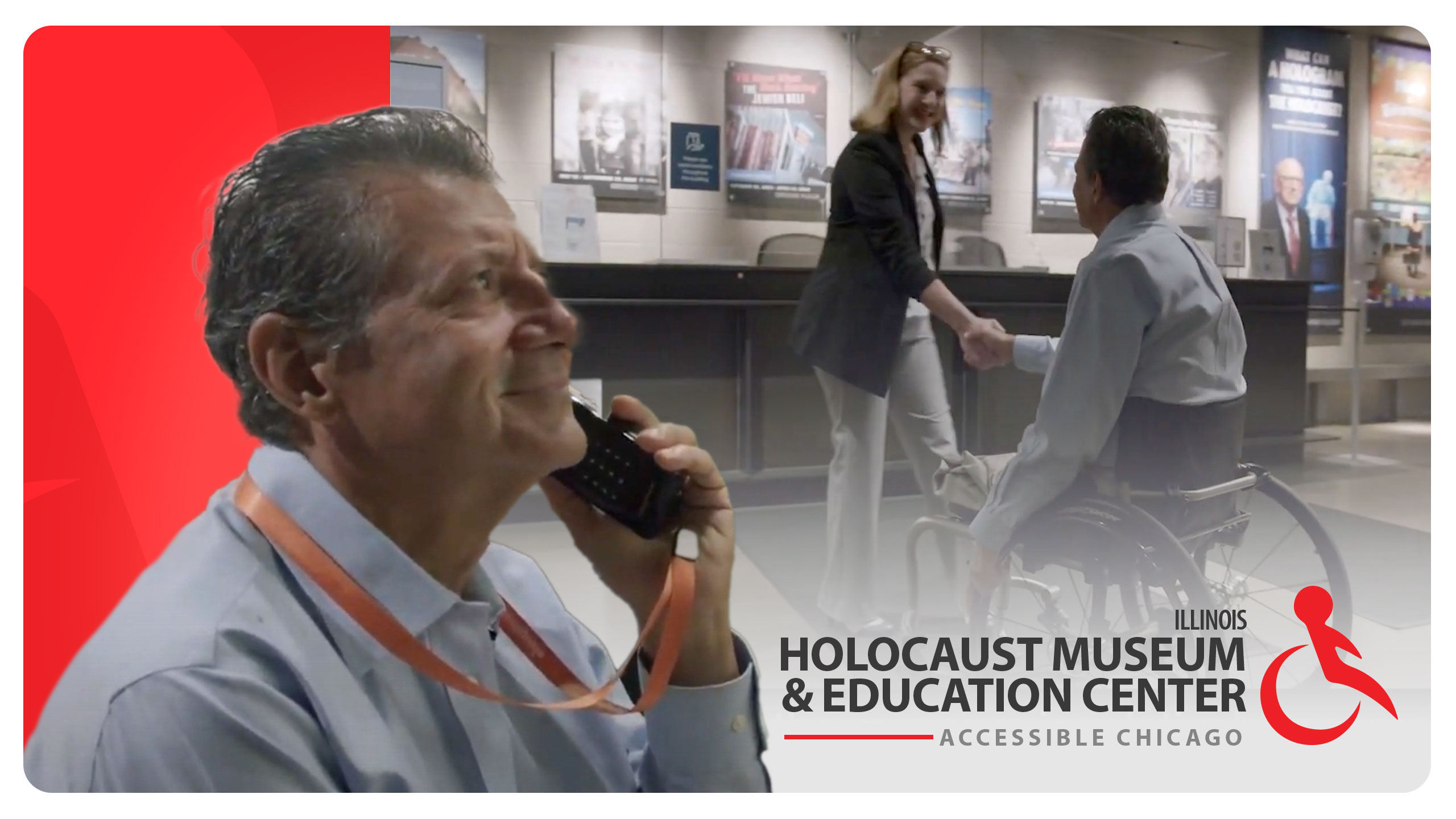
Discover the Illinois Holocaust Museum and Education Center’s dedication to accessibility, including audio language guides, CART writing, ASL interpretation, and accommodations like a lift for easy access to exhibits. Noah highlights ongoing efforts to lower barriers and create an even more welcoming space informed by community feedback. Located at 9603 Woods Drive in Skokie, Illinois, this museum stands as a testament to resilience and hope amidst the darkest of times. Learn about the museum’s unique focus on survivors from the Skokie community, ensuring their stories are preserved and shared for generations to come. With a commitment to accessibility, the museum is fully ADA accessible and continually strives to enhance its welcoming environment for all visitors.
Click to View ASL Transcript
NOAH CRUICKSHANK: My name is Noah Cruickshank, I’m the Vice President of Marketing and Business Development at Illinois Holocaust Museum and Education Center. The museum is located at 9603 Woods Drive in Skokie, Illinois. The easiest way to get here is to drive. We are right off the 94 highway. Otherwise, there is a PACE bus stop just outside the museum on Gulf Road. The museum is fully open to the public Wednesdays through Mondays. We open at 10 o’clock in the morning. The museum closes at 5:00, the last admission is at 4:00. The museum opened in April of 2009, almost 15 years ago. This is the largest independent Holocaust museum in the country, and it’s one of the largest in the world. What makes our museum unique is our focus on the particular survivors who come out of the Skokie community. Because the museum is relatively recent, it was built with ADA in mind, and so it is ADA accessible. That being said, we are working to make sure that we are even more welcoming to people who are coming through our doors.
TOUR GUIDE: I thought today we would start by experiencing our main Holocaust exhibition, which will be right through these double doors. It’s the Karkomi Holocaust Exhibition. Lots to see and explore in there. So, why don’t we get started?
GUS: Sounds great. Thank you. Immediately, the staff greeting you. I think they know that you have a disability and that you might need an assistance. And then as I went through the exhibit, initially you just captivated. And because of the spacing and the way it flows, the design of the flow, I was enjoying the exhibit: I wasn’t worried about disability or accessibility. I noticed that quite a bit of the information was within my eye level, and that was important to me, and I was able to touch things, feel, tactile. I think that only broadened on the experience. And yet, there’s this smoothness that allows you to—
TOUR GUIDE: Yeah. Smooth and continuous.
GUS: You can actually see an actual rail car that had all the carvings, all the gaps, and it was all genuine. It was a genuine car. I think that to me captivated me, being inside there.
NOAH CRUICKSHANK: We have audio language guides in a plethora of languages. We have worked very diligently to add both CART writing and ASL interpretation to the important events that we have every year. We have a rail car right now. We have a lift to be able to get you in and out, but we want to make sure that’s going to be even easier to get in and out of moving forward, and lower those barriers to entry for people. We’re most proud of where we’re about to go. In the months and years to come, we’ll be making significant changes to the visitor experience, informed by the lived experience of members of our community who have come in and shared how the space feels to them, in order to ensure that we will be even more welcoming as the years go by.
GUS: Quality of life is the most important thing that we have, no matter what age, no matter your disability, to be able to enjoy things that life has, and this museum does exactly that. It allows you, no matter what your disability may be, that you can come to this facility and have an experience and you can go home and feel this fulfillment that you did something today, and you feel good about.
NOAH CRUICKSHANK: The history of the Holocaust is bound up with a history of accessibility and the treatment of folks with various disabilities across the spectrum. So, it is incumbent upon us as we preserve survivor stories and share the lessons of the Holocaust that we are as welcoming as possible to folks from a community who were persecuted by the Nazis.

Recent Comments